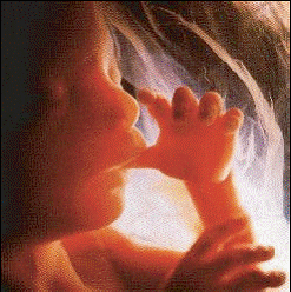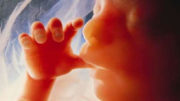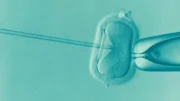How many realize a small unborn child is life, but if she/he feels no pain it would be ‘OK’ to abort. When does a preborn infant feel pain? In the early 17th century people felt that it had to see the light of day first. Modern gynecology has already dispelled that. Remember when ‘quickening’ (feeling the baby move), or even breathing ‘air’ was the time when viability was thought to happen? The ability to survive on its own changed quickly to viability to survive various life-altering changes in the early 1900’s.

Related: Sanctity of Life
Then the ability to feel pain was a factor to postpone abortion. Even animals are rendered as painless as possible prior to slaughter, or even medical operations.
For humans, it was decided that preborn infants could feel no pain before 24 weeks.
In the 1970s, the science of Fetology: Diagnosis & Management of the Fetal …patient was born—no pun intended. First, a crude ultrasound was developed. Then came 3D ultrasonograpy, fetoscopy, fetal EKG (electrocardiogram), and the fetal EEG (electroencephalogram). Amazingly, each one of these procedures has demonstrated the remarkable responsiveness, especially to pain, of a preborn child.
But Dr. Benjamin Nathanson did something in the 1980s that turned the science of fetology on its ear. Nathanson, a former abortionist himself, obtained a Realtime ultrasound video of a 12 week suction abortion.
The film, elucidated by Nathanson, is commercially available as the Silent Scream, now over 20 years old.
It factually shows the preborn continuously dodging the suction instrument used in the abortion. Heartbeat of the baby doubled. One can see its mouth opening wide while its body was being dismembered, and its appendages were torn off. No sound—since its body was encased in embryonic fluid.
For all indications available at the time, it was obvious the baby could feel incredible amounts of pain, and was scared literally to death. The baby was only 11 weeks old.
Fast forward 30 years to 2010. The science of fetology had leaped ahead even faster. In National Right to Life, Dr. Steven Zielinski, MD, JD, a teaching fellow (Loyola Chicago Institute of Health and Law) described extensive evidence for pain in unborn children. [August 14 – 6:30AM Tom Edgington — Req. by his Wife Saturday …]
Using the accepted definition of pain as “an adverse response to a noxious stimulus”, Dr. Zielinski described the functional structures needed, and demonstrated their existence in a preborn child. In short, he says neurotransmitters send chemical signals by 6 weeks gestation and electrical activity as early as 40 days. Actually, brain structure needed for pain detection is the thalamus, which is present by 8 weeks.
This neuro-anatomic structure allows the pain impulse to go to the thalamus, and sends a signal to pull away from the pain (as diagramed below).
In their book Why Can’t We Love Them Both, [Dr.and Mrs. J.C. Willke] explain how pain can be detected when nociceptors (pain receptors) discharge electrical impulses to the spinal cord and brain. This fire measured impulses outward, telling the muscles and body to react. [Medical Physiology, St. Louis: Mosby, pp. 391-427]
The developing child in the womb actually feels pain three to five times more acutely than newborns or adults. Unfortunately, no one hears it.
But these fetal scientific advances have mostly occurred in the last 50 years. What will occur in the next 50? It seems that fetal pain may be proven all the way to conception. It’s known a child has all the necessary DNA at that time for a complete person.
We know where science is headed—pain will likely be documented to occur in extremely young preborns with advanced measurements, earlier and earlier. This continues to decimate the “abort if no pain” argument.
Can one think out-of-the-box? Because you can’t hear it, means it doesn’t happen? Remember when ultrasound, much less “4D ultrasound”, wasn’t even a glimmer in the doctor’s eye? How much longer must women be forced to listen to silence, and not allowed to see their ultrasound during the abortion procedure?
How long before medical science will be able to analyze the preborn’s DNA days after conception, and know how they will turn out? Wait…they can do that now.
How long before an instrument is designed to detect a soul? No telling, but two hundred years ago, people scoffed at the ability to fly too…
===============
Kevin Roeten can be reached at roetenks@charter.net.




